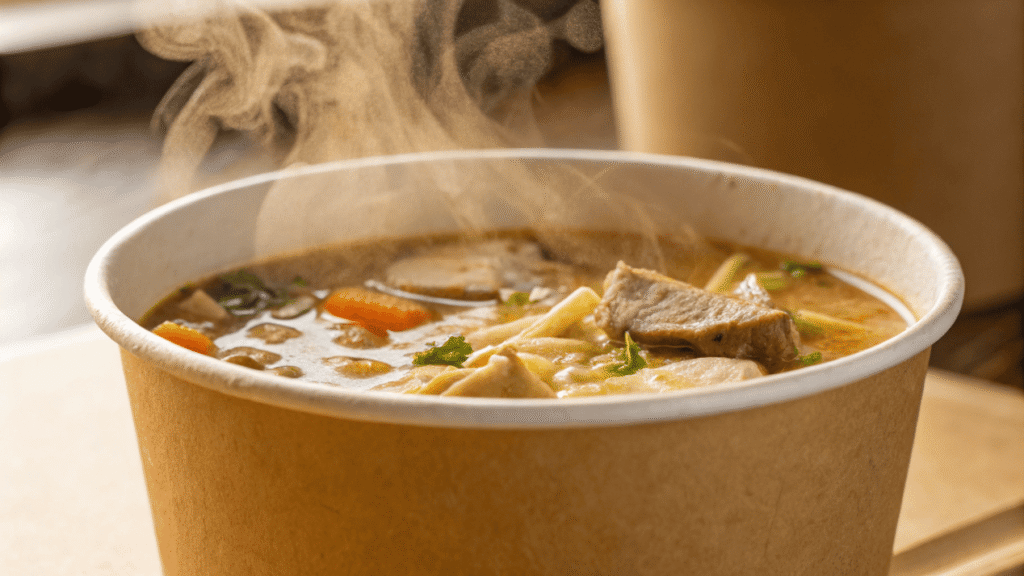Catering large events is stressful. Flimsy bowls that leak or get soggy can ruin a guest's experience. This waste of food can damage your hard-earned reputation and cost you future business.
Heavy-duty paper bowls transform catering by providing reliability, sustainability1, and precise portion control2. Choosing the right sizes, compostable materials3, and a strong design ensures your food is presented perfectly while reducing waste and elevating your brand.
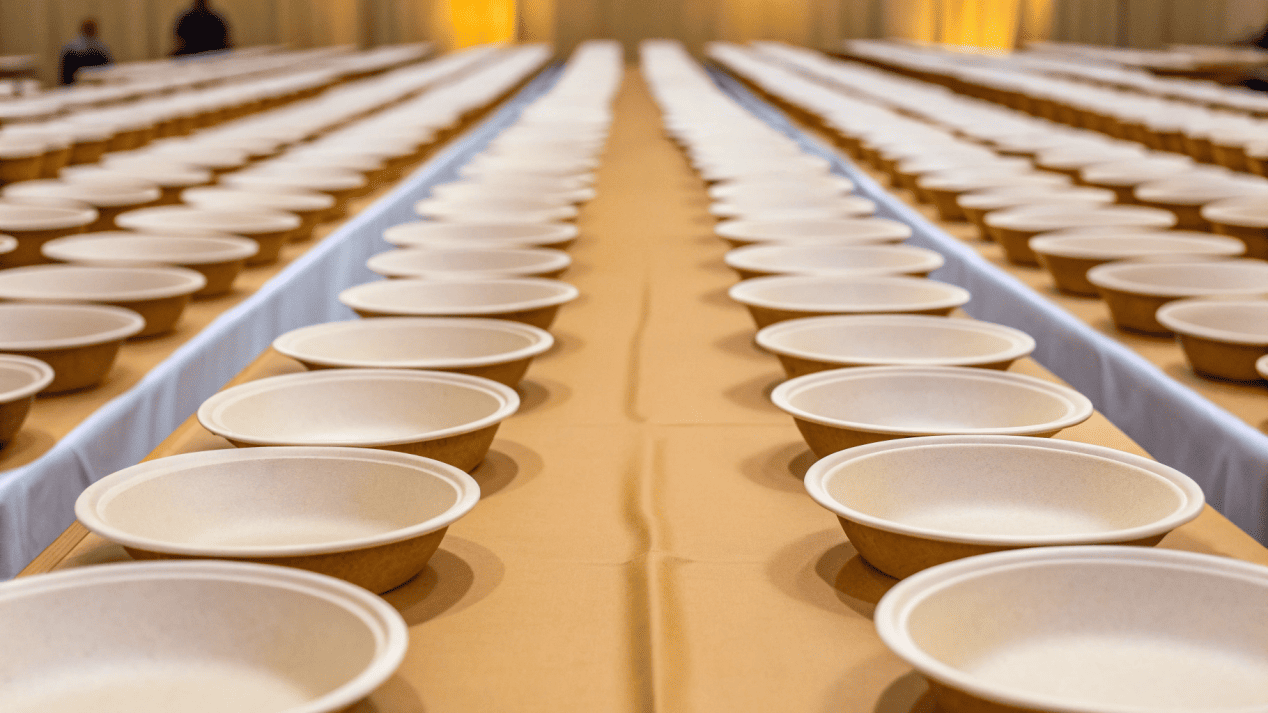
I once worked with a wedding caterer who almost lost a major contract due to a "bowl disaster." Her standard bowls turned to mush with a creamy risotto, causing a mess and embarrassing the client. It was a wake-up call that the container is just as important as the food inside. That single experience taught us that investing in the right heavy-duty bowl isn't a cost—it's insurance for your reputation. Let's dive into how you can choose the right ones for your next big event.
What Bowl Size Should You Choose for Large Events?
Choosing bowl sizes feels like guesswork. Order the wrong ones, and you're stuck with massive waste or unhappy guests getting tiny portions. Let's bring some strategy to it.
For large events, use 8-12 oz bowls for sides or desserts, 16-24 oz for main courses like salads or pasta, and larger 24-32 oz bowls for hearty soups or family-style service. This ensures portion control2 and reduces food waste.
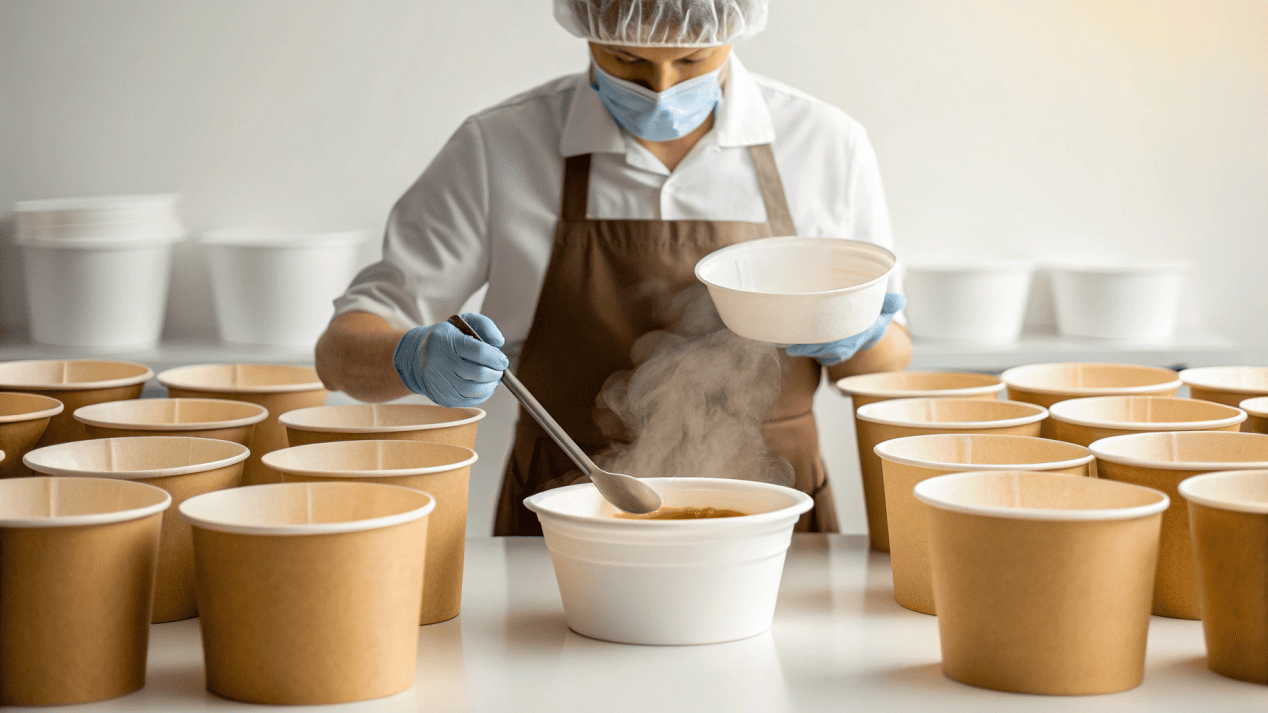
I always tell my catering clients to think of bowls like tools in a toolbox—each size has a specific job. Choosing the right bowl capacity for an event is a balance between cost control and guest experience. An 8 oz bowl is perfect for a serving of ice cream or a fruit salad, which controls portions and is easy for guests to handle while standing. For main courses like a grain bowl or a substantial salad, 16 or 24 oz is the sweet spot. Then you have the 32 oz workhorse. It's perfect for hearty soups like ramen or for family-style portions placed on tables. Here's a pro tip: consider "perceived value." A standard portion of food served in a slightly larger bowl can appear more generous, elevating the guest experience without increasing your food cost. It is a delicate balance, but mastering it sets you apart.
| Bowl Capacity | Typical Use Case | Key Advantage |
|---|---|---|
| 8-12 oz | Appetizers, Sides, Desserts | Easy to handle, portion control2 |
| 16-24 oz | Main Courses like Salads, Pasta, Grain Bowls | Versatile, standard single-serving size |
| 24-32 oz | Hearty Soups, Stews, Family-Style Service | Appears generous, prevents spills |
Are Compostable Bowls Strong Enough for Event Catering?
Clients are demanding sustainable options, but you're worried compostable bowls are weak. The fear of a soggy, eco-friendly bowl collapsing is real. They are strong enough if you choose correctly.
Yes, modern compostable bowls are exceptionally strong for catering. Options made from bagasse4 or high-quality PLA-lined paperboard5 are durable enough to handle hot and wet foods without getting soggy or leaking, all while meeting sustainability1 goals.
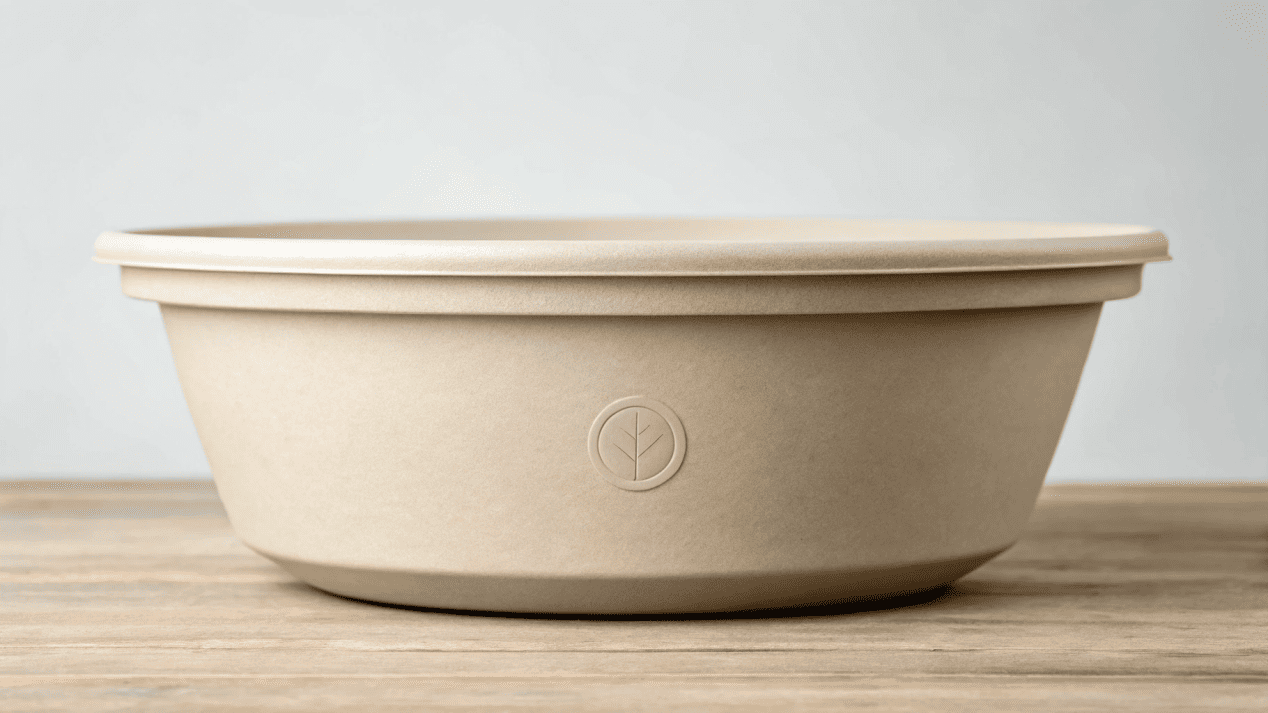
It’s a common myth that "eco-friendly" means "flimsy." That might have been true a decade ago, but technology has come a long way. The best compostable options today perform just as well as, if not better than, their traditional counterparts. Take bagasse4, which is made from sugarcane fiber. It's incredibly sturdy, naturally grease-resistant, and microwave-safe. Then there are PLA-lined paper bowls. PLA is a plant-based plastic made from cornstarch that provides the same leak-proof barrier as a traditional plastic lining, but it is fully commercially compostable. The key is to look for certifications. Look for certifications from organizations like the Biodegradable Products Institute (BPI). This assures you and your client that the product has been tested and verified to break down in a commercial composting facility. Remember, offering compostable bowls is only the first step. To be truly sustainable, you also need to arrange for organic waste bins at the event and ensure that waste is sent to the correct facility.
Which Heavy-Duty Bowls Are Best for Hot Soups?
Hot soup is the ultimate test for any disposable bowl. A bowl that gets soggy or leaks can ruin a guest's outfit and your reputation. You need a solution that is proven and trusted.
The best heavy-duty bowls for hot soup are made from high-GSM paperboard6 with a reliable PE or PLA lining and a sturdy construction. This combination prevents leaks and holds its shape with even the hottest liquids.
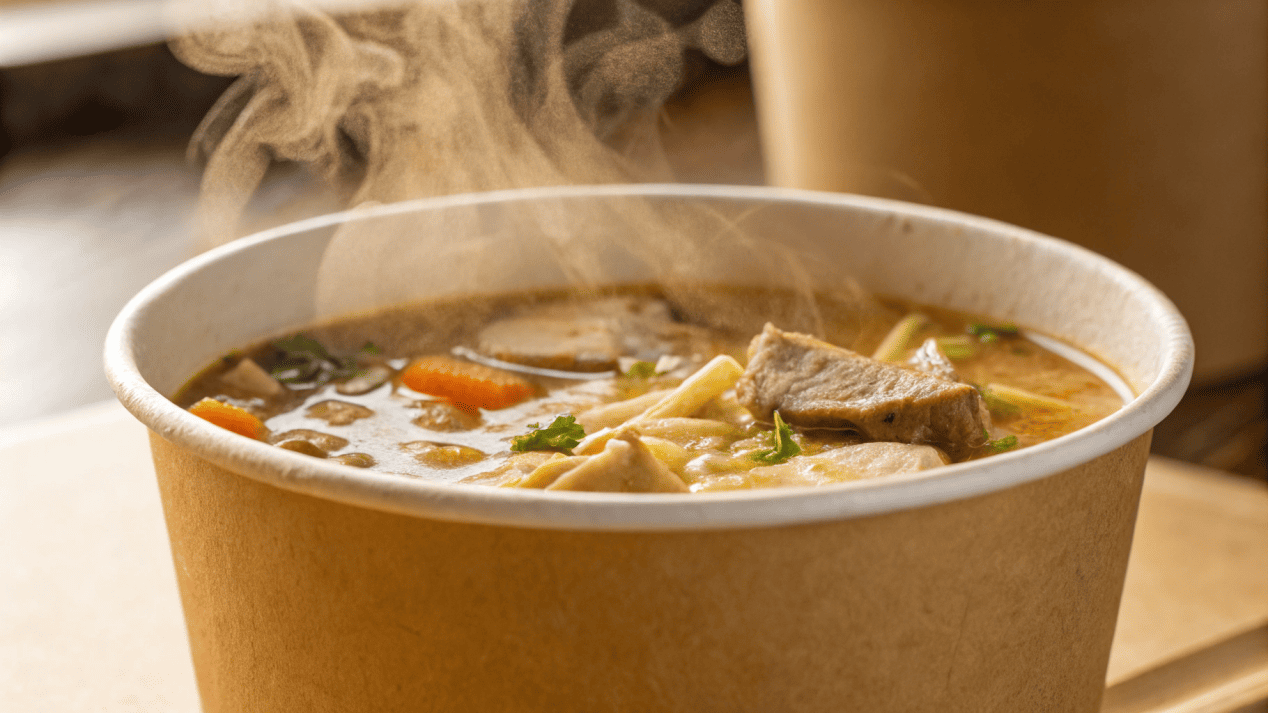
When I evaluate a bowl for hot soup, I look at three things: material thickness, the lining, and the construction. First, thickness, which we measure in GSM (Grams per Square Meter). A higher GSM means thicker, more rigid paperboard. For hot soup, you want a high GSM bowl that won't flex when it is picked up. Second, the lining is crucial. This is the waterproof barrier that prevents the liquid from soaking into the paper fibers. A double PE (polyethylene) coating has been the industry standard for decades because it is so reliable. Today, high-quality PLA linings offer the same excellent performance but with the benefit of being compostable. Finally, look at the bowl's construction. Does it have a tightly rolled rim for added strength? Is the base well-formed? These small details make a huge difference under pressure. And if you're transporting the soup, always use vented lids7. The small holes let steam escape, preventing a pressure buildup that can pop the lid off.
How Can You Reduce Waste in Your Catering Services?
Your events create mountains of trash, which costs money and harms the environment. You know you need to make a change, but you're not sure where to start.
Reduce catering waste significantly through accurate portion planning, smart menu design8, and implementing a three-bin system9 for landfill, recycling, and compost. Partnering with food donation programs10 also turns surplus into a community benefit.
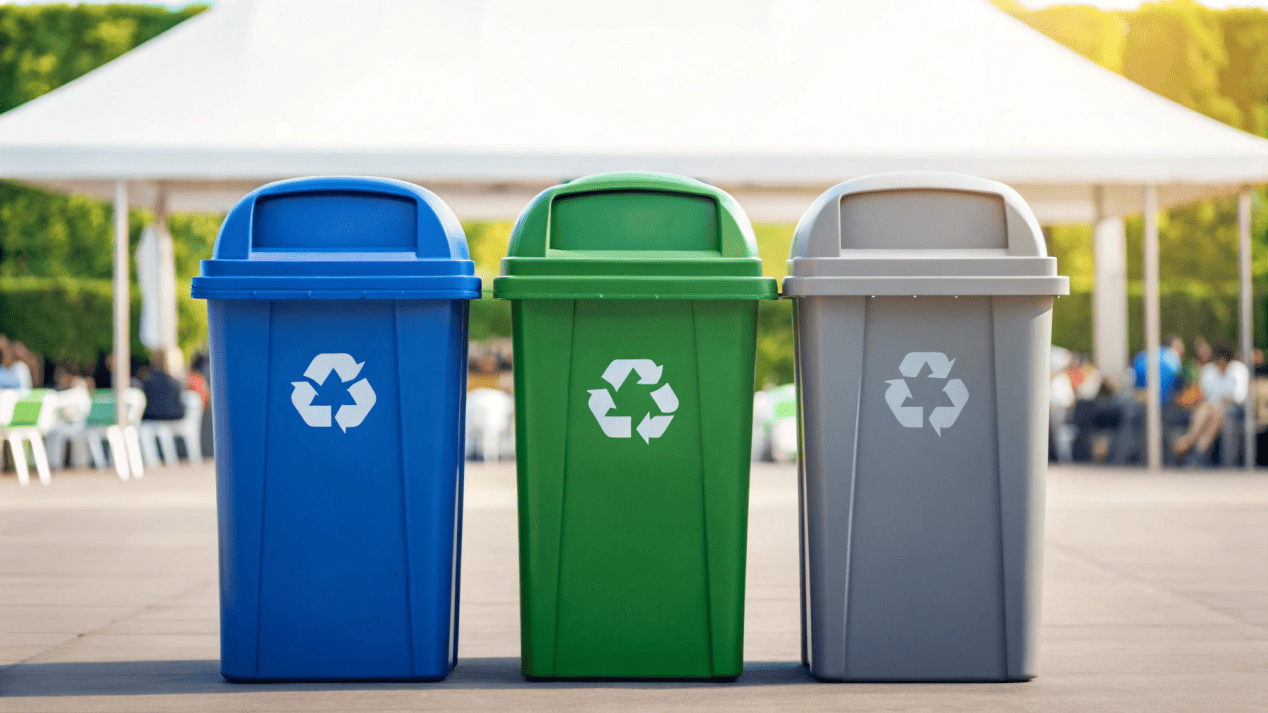
As a packaging expert, I've learned that reducing waste goes far beyond just choosing a compostable bowl. It's a system. The most effective caterers I work with look at the whole picture. It starts with the food itself. Use data from past events to accurately forecast how much you'll need. Precise portion planning directly reduces the biggest source of waste: food leftovers. Next, be smart with your menu design8. Create menus that use ingredients across multiple dishes, which reduces the risk of having excess raw materials. At the event, education is key. Set up clearly labeled bins for landfill, recycling, and compost. A simple sign with pictures can help guests make the right choice. Finally, turn potential waste into a positive impact. Build relationships with a local food bank to donate safe, unserved food. This not only diverts waste from the landfill but also supports your community. Training your staff on these practices is essential; they are at the heart of a successful waste reduction11 program.
Conclusion
Choosing the right heavy-duty paper bowl is about more than just holding food. It's about protecting your reputation, supporting sustainability1, and delivering a seamless experience that delights guests. Choose wisely.
Learn about sustainable practices in catering that can improve your brand image and attract eco-conscious clients. ↩
Understand the significance of portion control in catering to enhance guest experience and reduce food waste. ↩
Discover the top compostable materials that can help you meet sustainability goals without compromising quality. ↩
Find out how bagasse can be a strong, eco-friendly option for your catering needs. ↩
Learn about PLA-lined paperboard bowls and how they provide a leak-proof barrier while being compostable. ↩
Explore the advantages of high-GSM paperboard in creating durable and reliable catering bowls. ↩
Learn why vented lids are essential for transporting hot soups safely and effectively. ↩
Explore effective menu design strategies that can help reduce waste and enhance guest satisfaction. ↩
Learn how implementing a three-bin system can streamline waste management at your events. ↩
Find out how partnering with food donation programs can benefit your business and the community. ↩
Discover practical strategies to minimize waste in your catering services and improve sustainability. ↩
